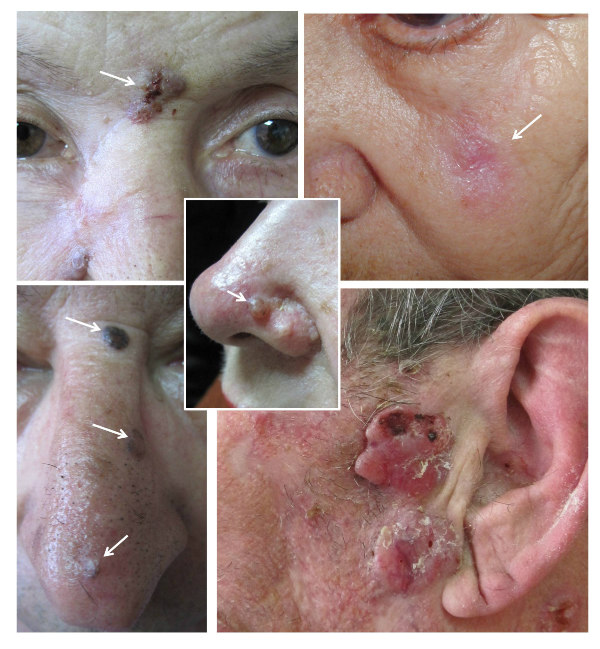Contrary to what we usually think, the most common skin cancer is not always a mole. Melanoma is the most aggressive skin cancer, and its most common appearance is that of an “ugly mole” and is the one that most worries us dermatologists. In any case, the most common skin cancer par excellence is basal cell carcinoma or epithelioma; in fact, it is also the most common cancer in humans.
Basal cell carcinoma is the most common cancer in humans.
It usually appears after the age of 50, although in people with very fair skin it may appear earlier. Fortunately, this type of tumor grows in a localized form (i.e. only on the skin and it is extremely rare for it to metastasize) so it is not usually life-threatening. In any case, it must be treated and controlled, otherwise it grows and grows causing ulcers in the area where it appears, which can be very painful.
But do you know what basal cell carcinoma looks like? Well, there are several types of basal cell carcinoma that can resemble moles, scars or warts. For example, the woman in the photo has several bumps on her nose, but only one is a basal cell carcinoma.

What characteristics are important to CONSULT A DERMATOLOGIST?
- It is a lump or a wound that bleeds and does not heal.
- Although slow, it grows continuously
- It has a shiny surface
- It is in an area where we have been exposed to the sun throughout our lives.
Apart from these more or less common characteristics, basal cell carcinomas can have other very varied features that I will illustrate below:
1. A basal cell carcinoma can be SMALL or LARGE.

Basal cell carcinomas begin as small granules of a few millimeters and over the course of months (or years) become larger.
2. A basal cell carcinoma can be DARK or LIGHT.
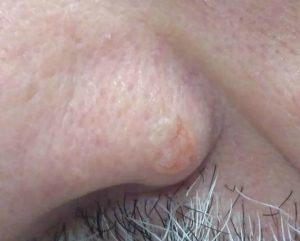
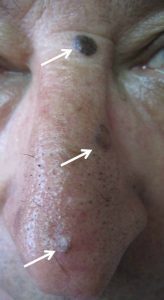
Basal cell carcinomas are most often skin-colored, but it is not uncommon for them to have some brown areas or even to be black.
The three bumps that the person in the image has correspond to basal cell carcinomas. As you can see, they are different in color and appearance.
3. A basal cell carcinoma can be FLAT or BUMPY.
The volume of basal cell carcinoma can be very different. There are so-called “nodular” forms and so-called “superficial” forms that usually appear on the chest or back.
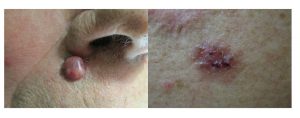
4. A basal cell carcinoma may have a WOUND or SCAR appearance.
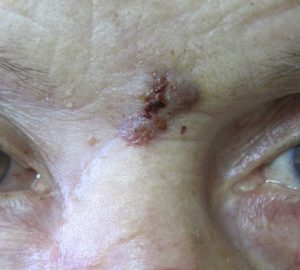
It is possible for basal cell carcinomas to ulcerate and thus take on the appearance of a wound (which usually does not heal on its own). It is more frequent in large ones, but we can also see some erosions in small ones.
On the other hand, there is a type of basal cell carcinoma, called sclerodermiform, which is very similar to a scar. The peculiarity is that in the area the sufferer does not remember any previous trauma and it tends to grow over time (which does not occur with scars).
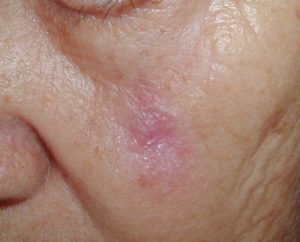
In summary…
Basal cell carcinoma is a tumor that grows slowly, but it is important to detect. It can have a very varied appearance, so it is advisable to consult a dermatologist if a wound or lump grows, especially if its surface is shiny or bleeds.
